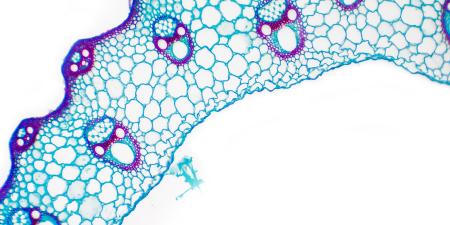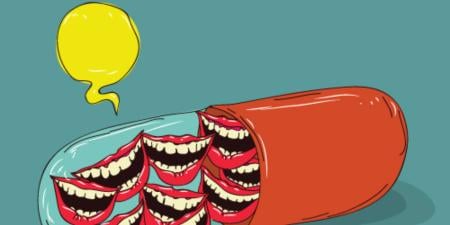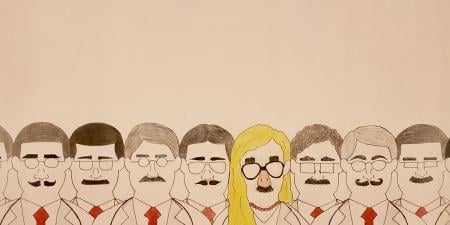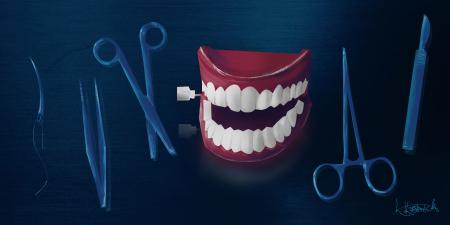Abstract
If both art and laughter are good for your health, why aren’t we encouraging more humor in museums and hospitals? We are taught to approach art with awe and respect—and to treat medicine as deadly serious business. It follows, then, that overt displays of humor, such as laughing or joking in a museum, doctor’s office, or hospital, are probably in bad taste. But if viewing and making art can lower rates of anxiety and depression and help soothe chronic pain—and if laughter helps blood vessels function better and improves the flow of oxygen to the heart and brain—then perhaps we unwittingly deprive our patrons and patients of an important tool in the health and wellness toolbox.
Health Benefits of Art and Humor
Every time a new study extols the health benefits of viewing and creating art, my phone chirps for days as friends and relatives forward the good news. As a program director at the Art Institute of Chicago, I receive many articles crediting art as a healer: it can lower rates of anxiety and depression in both men and women, help soothe chronic pain, stave off symptoms of dementia and Alzheimer’s disease, and accelerate brain development in young children.1,2,3,4,5 In a recent study, British researchers theorized that people who expose themselves to the arts are more likely to be engaged in the world around them, contributing to their overall health and wellness.6
Laughter, too, is heralded as good medicine—“the best medicine”—as the saying goes. A 2005 Psychology Today article points to numerous studies showing that laughter reduces pain, increases job performance, connects people emotionally, helps blood vessels function better, and improves the flow of oxygen to the heart and brain.7
If both art and humor are healing, should we encourage more laughter in museums and hospitals? Currently, both institutions tacitly or explicitly encourage quiet, and restraint is understood as a social norm. Both can limit laughter. By unintentionally muting giggles and guffaws, do museums and hospitals deprive their patrons and patients of the positive effects that humor could have on their health?
Art Can Be Funny
At the Art Institute, I watch museum visitors inspect the details of exquisite 17th-century Dutch drawings or the rapid brush strokes of the luminous Stacks of Wheat (End of Summer) by Monet and then whisper quietly to their companions. I see smiles or hear occasional chuckles, but full-throated laughter from adults looking at art is rare. Of course, most visitors don’t want to distract other patrons and their quiet is meant to be respectful. The occasional exceptions are teenagers or young adults who are not fully socialized to museum culture. Their gregarious lack of restraint provokes dirty looks but also spontaneous grins from adults who recognize how freeing it might feel to loosen the expectations of gallery behavior.
From our earliest visits to museums, we are socialized to treat art as serious business and to show reverence. We learn that noise and laughter are inappropriate even when the art in question is witty, bawdy, humorously ugly, or even absurd. Or perhaps noise and laughter make us uncomfortable.
Art is an ideal medium for many forms of humor, and many artists are intentionally funny. French Realist Movement artist Honoré-Victorin Daumier made thousands of 19th-century Parisians laugh during his 40-year-career as a satirical cartoonist. He captured in drawing, painting, lithography, and sculpture “the characteristic look and demeanor of every segment of Parisian society, ranging from the crotchets and timidities of the urban middle class … to the frauds of speculators … the pomposities of lawyers … the self-delusions of artists, the rapacity of landlords, and the vanity of bluestockings.”8 Daumier’s artistic gift and biting wit inspired many of today’s most insightful editorial cartoonists, directly or indirectly. Surrealist Salvador Dalí’s Venus de Milo With Drawers, a half-size plaster reproduction of the famous marble statue (130/120 BC; Musée du Louvre, Paris) is a visual joke, one that is deeply embedded in the popular imagination. By perforating the famous Venus with drawers decorated with silky mink pom-poms on the figure’s forehead, breasts, stomach, abdomen, and left knee, Dalí engages in two of his favorite practices, defacing a classic symbol and contrasting the animate and inanimate.
Other objects in the Art Institute’s collection flirt with humor, including an 18th-century cruet from the Meissen Porcelain Manufactory that is decorated with fanciful roosters and Chinese figures, René François Ghislain Magritte’s darkly funny 1949 drawing of caskets sitting in for people in The Balcony, and Maurits Cornelis Escher’s witty 1948 lithograph, Drawing Hands, in which what is drawn is doing the drawing.
Humor in a Hospital
My 86-year-old mother, an artist, recently spent 5 days in the hospital recovering from her second heart attack. I visited every day, reading while she slept, and chatted with the nurses when they checked her vitals. I noticed a quiet restraint on the floor similar to that of the museum’s galleries. It wasn’t gloomy, but laughter was muffled, and doctors, nurses, and patients rarely exhibited humor. Illness and infirmity are serious business after all, and hospital employees are rightfully careful not to disturb resting patients or to appear to make light of their circumstances. Even so, every now and then, when laughter bubbled across the hushed ward, nurses and doctors smiled, the air became lighter, and patients and their families displayed a mild sense of relief.
My mother’s cardiologist is deeply caring and direct, and he cheerfully applauds her efforts to stave off her advanced cardiovascular disease with a vegan diet and daily exercise regimen. He’s also boisterous and mischievous, and he makes her laugh—hard. His lack of restraint reminds me of those high-spirited students giggling in the art galleries, oblivious to (or ignoring) museum etiquette.
If “the best medicine” lightens mood, loosens the body, and dispels awkwardness, does it matter if it seems out of place? If the simple act of looking at art can reduce a museum visitor’s anxiety, then it follows that easy laughter adds healthy value to the gallery experience, just as my mother recovering in her hospital bed may benefit if her doctor’s cheerful irreverence improves the flow of oxygen to her heart. In either case, the healing combinations of humor plus art and humor plus medicine enrich lives.
References
-
Fancourt D, Steptoe A. The art of life and death: 14 year follow-up analyses of associations between arts engagement and mortality in the English Longitudinal Study of Ageing. BMJ. 2019;367:l6377.
-
Solan M. Art therapy: another way to help manage pain. Harvard Health Blog. July 12, 2018. https://www.health.harvard.edu/blog/art-therapy-another-way-to-help-manage-pain-2018071214243. Accessed April 23, 2020.
-
Mills B. Does music benefit the brain? Cognitive Vitality Blog. March 5, 2019. https://www.alzdiscovery.org/cognitive-vitality/blog/does-music-benefit-the-brain. Accessed April 23, 2020.
-
Graham C. Benefits of the arts in early childhood development. Early Childhood Commission. https://ecc.gov.jm/benefits-of-the-arts-in-early-childhood-development/. Published July 13, 2017. Accessed April 23, 2020.
-
Rajan KB, Rajan RS. Staying engaged: health patterns of older Americans who participate in the arts. An analysis based on the Health and Retirement Study. National Endowment for the Arts. https://www.arts.gov/sites/default/files/StayingEngaged_0917.pdf. Published September 2017. Accessed April 23, 2020.
-
All-Party Parliamentary Group on Arts, Health and Wellbeing. Creative Health: The Arts for Health and Wellbeing. 2nd ed. https://www.culturehealthandwellbeing.org.uk/appg-inquiry/Publications/Creative_Health_Inquiry_Report_2017_-_Second_Edition.pdf. Published July 2017. Accessed April 9, 2020.
-
Estroff Marano H. Laughter: the best medicine. Psychology Today. April 5, 2005. https://www.psychologytoday.com/us/articles/200504/laughter-the-best-medicine. Accessed April 8, 2020.
-
Eitner L. Honoré Daumier. In: French Paintings of the Nineteenth Century. Part I: Before Impressionism. Washington, DC: National Gallery of Art; 2000:150-190. https://www.nga.gov/content/dam/ngaweb/research/publications/pdfs/french-paintings-nineteenth-century.pdf. Accessed May 7, 2020.



